The first Guild monthly meeting in was held on the 18th March 2024. Members and guests gathered to watch a demonstration by pastel artist Clive Eastland.
Clive lives and works in Newbury, Berkshire. He has been a professional artist for the past twenty years and enjoys painting a wide range of subjects from landscape and seascape to still life. Using the richness and vivid colour of pastel, he captures the elusive quality of light to create an atmospheric and evocative image. Clive is keen to pass on his passion for pastels and regularly hosts tuition sessions and courses. His paintings are widely exhibited and are to be found in private collections worldwide.
Clive’s subject for the evening was a wave breaking on the seashore. He spent some time explaining his choice of materials and method of working. His preferred paper is Clairefontaine Pastelmat® – he commented that this substrate is quite expensive but worth it for the advantages it offers over more abrasive sandpaper like surfaces. Below is some information on the features of Pastelmat® from Clairefontaine’s official website.
- Organic Velvety Surface: Pastelmat® is a truly unique product with a strong, velvety surface that has more tooth than traditional Ingres papers but without the abrasive qualities of sanded papers. Pastelmat®‘s organic surface and powerful texture are derived from cellulose plant fibers. In comparison, sanded pastel papers, like all industrial sandpapers, are made with aluminum oxide and other chemicals to create their gritty surface.
- Vibrant Color: Pastelmat®‘s texture grabs onto the pastel, breaking up the pigment and pulls it deep into the surface for exceptionally vibrant color.
- “Painting with Pastel”: Pastelmat® has a unique interaction with pastels, allowing the artist to create painterly effects with soft, buttery marks.
- Blending: Pastelmat® offers remarkable control, allowing for effortless, precision blending of pigments.
- Layering: Supports building up multiple layers of pigment to control color tone and intensity.
- Washes: Holds up to water or solvent-based washes. This allows pastelists to create underpaintings with denatured alcohol or other solvents and to build layers on top.
- No need for fixatives: Because Pastelmat®‘s surface pulls and holds pigment so deeply, fixatives are not needed to keep the color stable.
- Mixed Media Surface: Pastelmat®‘s is so versatile that, in addition to pastel and pastel pencils, it will support most dry and wet media including: oil pastels, charcoal, colored pencils, acrylics, watercolors and gouache.
- Supports All Pastel Types: Pastelmat® supports the application of soft, medium and hard pastels, Cray-Pas® and other oil pastels, PanPastel® colors
Clive’s preferred pastels are Unison which he values for their intensity of pigment, though he will also use cheaper harder pastels or pastel pencils for finer details. He demonstrated his method of applying the pastel to the paper using various parts of his hand as the applicator to achieve thin layers of colour letting the underlying colour of the paper and previously applied layers of pastel show though. He also applies colour directly with the pastel to get deeper more intense areas of pigment which is then softened and blended with his fingers and hand. Clive also demonstrated how even dark pastel can be brushed away or lifted with a putty rubber to remove pigment from the tooth of the paper and allow more pastel of a different colour to easily be applied over the top. He stressed the importance of randomness in mark making and also mentioned that he tries each selected pastel out on the margins of the paper to check it is just the shade he is after before applying it to the work. Clive does not use fixative on his finished works as it darkens the pigments, it is not necessary with Pastelmat® (as discussed above) and a good knock on the edge of the easel is enough to shed any loose material prior to framing.
The progression of the painting is shown below.
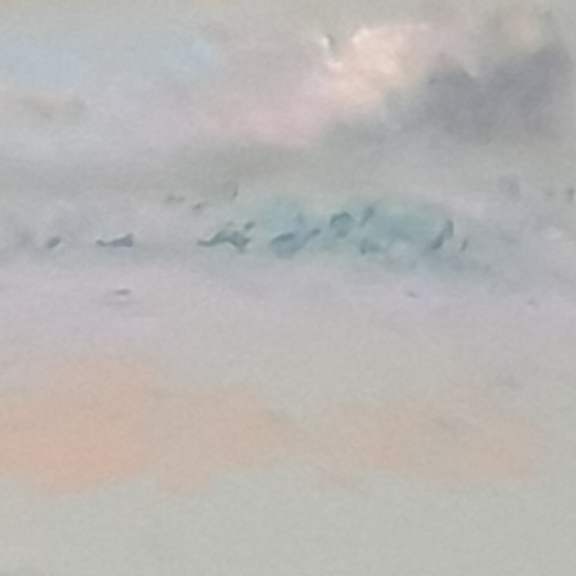
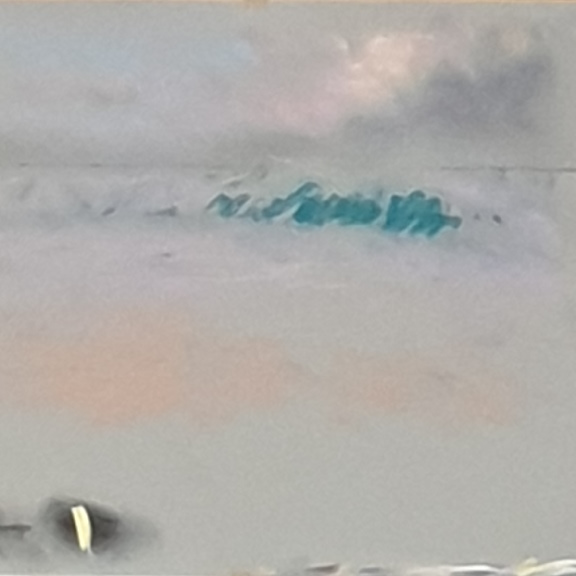
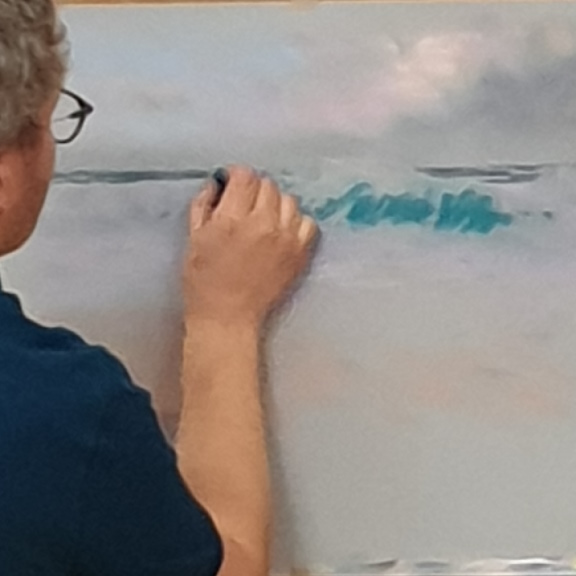
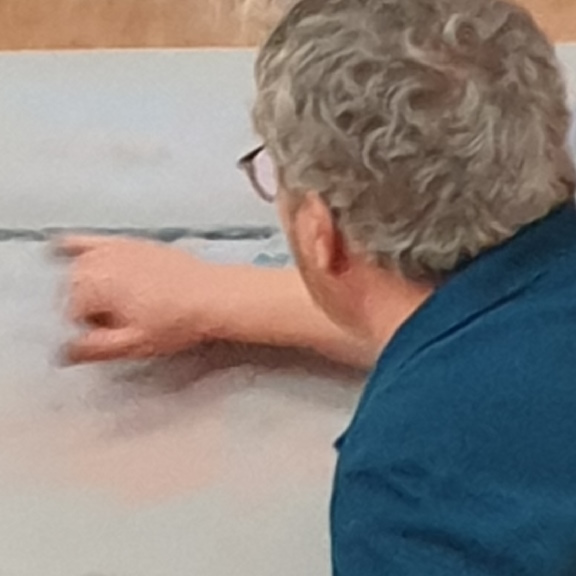
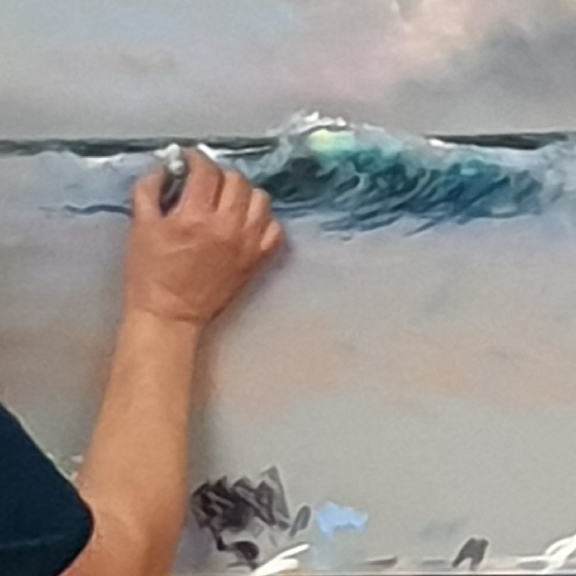
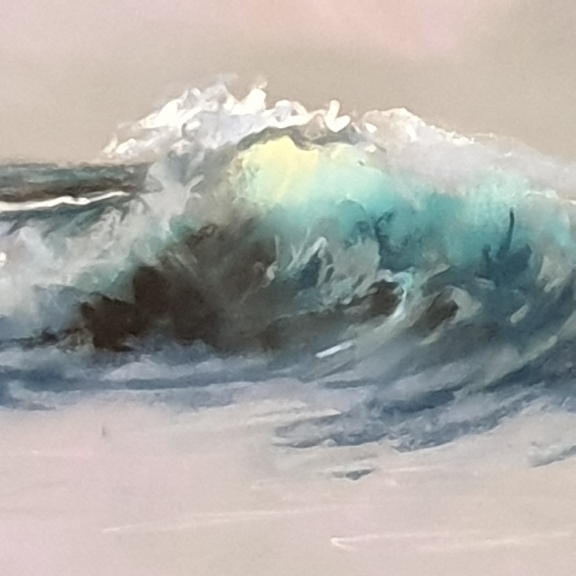
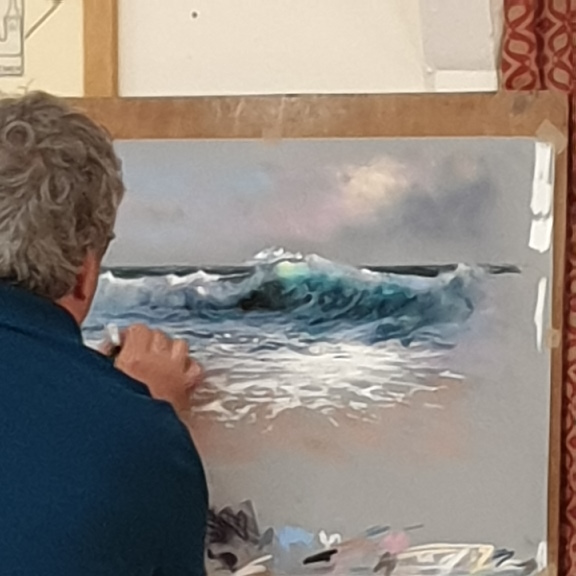
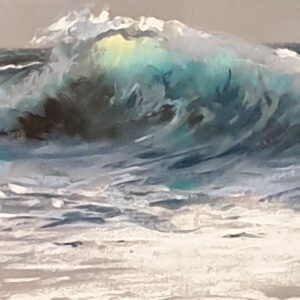
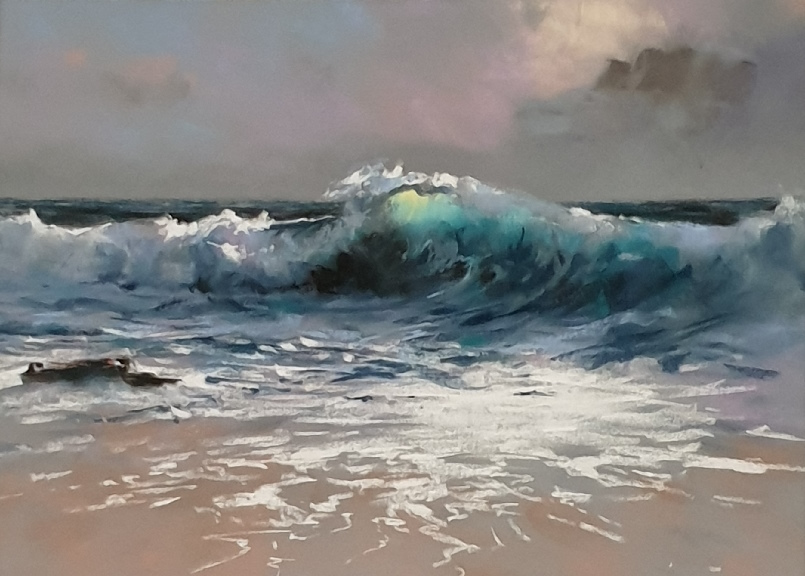
My husband – a none artist (who enjoys watching Bob Ross painting) – described his impressions of the evening:
“I stayed and watched from the back. The painter probably spent more time talking through the process in great detail than actually painting, which meant that the artists in the room were given a good understanding of the process. The painting magically appeared, not unlike a Bob Ross painting where with the right paint colour and quantity of oil paint on the brush, and the technique of the mark making, the paints are mixed and blended and on TV the result looks reasonable having been achieved with relatively few brush strokes. However, the technique with pastels is completely different since the colours of pastels don’t mix like oils and so the colour choice and mark making appear more skilled. The crashing wave painting was transformed by the appearance of a flat rock off to the side in the middle foreground adding depth to the view, and even when viewed right up close, the final painting was stunning.”
David March
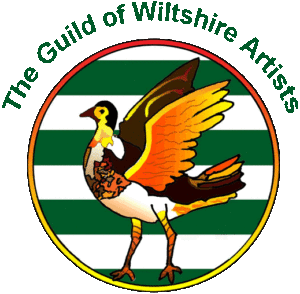
Excellent write-up Ann.